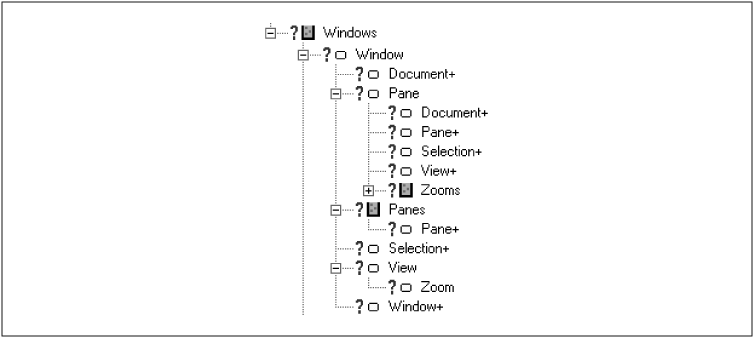The Window Object
A Window object represents a window. Window objects are kept in a Windows collection. Figure 11-4 shows the Windows object and its children. (I discuss Document and Selection objects in Chapters Chapter 12 and Chapter 14.)

Figure 11-4. The Windows object and its children
Windows, Panes, and Views
In Microsoft Word, each window is associated with a document. Normally, a document window contains a single document pane, but a window can be split into two panes. (Additional panes may exist if comments or footnotes are visible, but I do not deal with these types of panes.)
Many of the visibility-related properties of windows (as opposed to the contents of the windows), such as scrolling and the appearance of rulers and scrollbars, are properties of the Pane objects associated with the window. However, since normally there is only one pane per window, Microsoft was kind enough to define these properties for the Window object as well. Thus, for instance, to scroll down the active window pane, I can write:
ActiveWindow.LargeScroll
instead of:
ActiveWindow.ActivePane.LargeScroll
Many of the visibility-related properties of the contents of a window, such as whether hidden text is visible or paragraph marks are visible, are accessed through the View object, which is a child of both the Pane object and the Window object (in keeping with the precept mentioned in the previous paragraph). ...
Get Writing Word Macros, Second Edition now with the O’Reilly learning platform.
O’Reilly members experience books, live events, courses curated by job role, and more from O’Reilly and nearly 200 top publishers.

